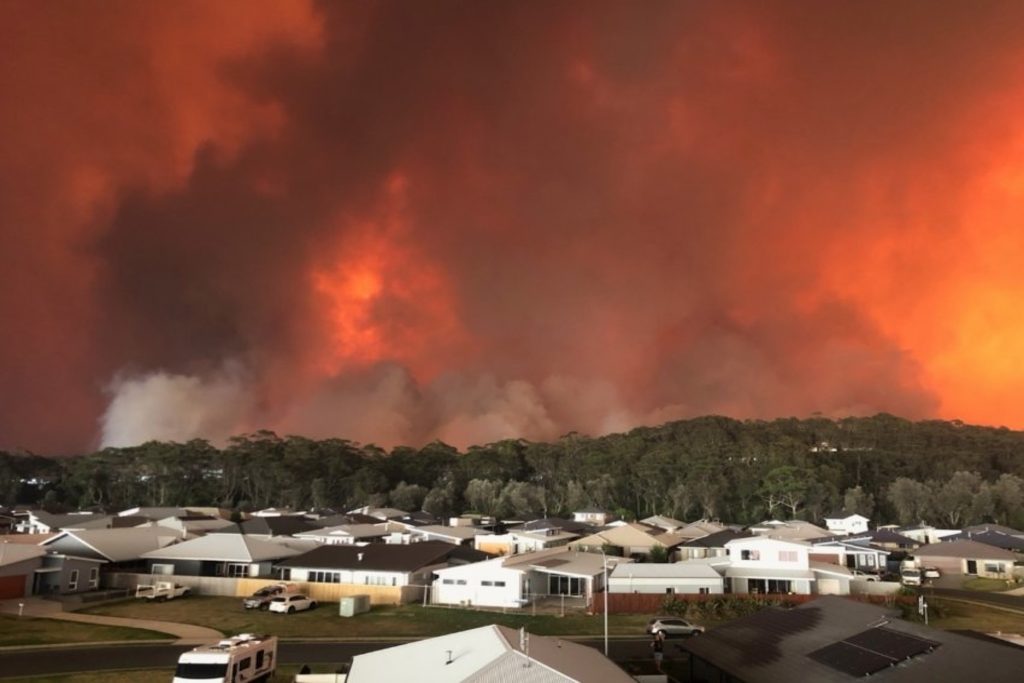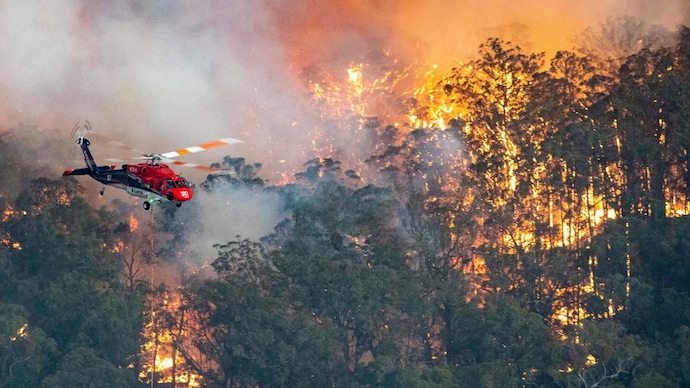Strategizing for Safety: Developing an Effective Bushfire Management Plan
Strategizing for Safety: Developing an Effective Bushfire Management Plan
Blog Article
Essential Tips for Bushfire Administration to Ensure Fire Defense

Recognizing Bushfire Threat Degrees
Comprehending the varying degrees of bushfire threat is essential for effective planning and prep work in mitigating possible threats to lives and buildings. Bushfire risk degrees are commonly categorized based upon elements such as weather, gas schedule, topography, and historical fire actions. By comprehending these threat areas, degrees and people can proactively apply approaches to decrease vulnerability and boost resilience when faced with possible bushfire events.
The initial degree of bushfire threat is reduced risk, where the possibility of a bushfire happening and triggering considerable injury is minimal. Risky degrees symbolize a significant danger, with problems helpful to rapid fire spread and extreme fire behavior.
Understanding these bushfire risk levels allows stakeholders to tailor their readiness and response activities accordingly, ensuring a efficient and aggressive approach to bushfire management.
Establishing a Defensible Space
Reliable bushfire administration begins with establishing a defensible room around homes to improve protection versus potential fire threats. A defensible space is a barrier zone that develops a barrier between a framework and the surrounding combustible plants. This space functions as a crucial line of defense, offering firemans a safe area to run and aiding to decrease the danger of a fire spreading to the residential or commercial property.
When developing a defensible room, it is crucial to think about the format of the property and the bordering landscape. Clearing plants, especially very flammable plants, within a particular radius of the residential property can help prevent the fast spread of fires. Additionally, preserving a well-irrigated area around the residential or commercial property can further improve its defensibility.
Normal upkeep of the defensible room is important to guarantee its effectiveness. This consists of trimming overhanging branches, removing dead plant life, and keeping the location totally free of debris. By investing effort and time into developing and preserving a defensible room, homeowner can substantially improve their opportunities of safeguarding their homes and assets during a bushfire.
Carrying Out Fire-Resistant Landscaping
When developing landscapes to alleviate the danger of bushfires, including fireproof elements is important for improving residential property protection and decreasing fire risks. Carrying out fire-resistant landscape design entails critical preparation to develop a defensible space around structures. Start by selecting fireproof plant varieties that are much less most likely to ignite and generate reduced degrees of combustible products. Select plants with high moisture web content, reduced oil material, and marginal dead plant life to reduce the risk of fire spread. Additionally, keep sufficient spacing between plants and keep them correctly pruned to stop fire from conveniently leaping in between greenery.

Producing an Emergency Emptying Plan
Creating a detailed emergency emptying plan is essential for guaranteeing the security and well-being of individuals throughout possible bushfire cases (BAL Report). An efficient emptying strategy need to detail clear treatments to comply with in case of a bushfire risk, consisting of designated emptying routes, assembly points, and interaction procedures
To start developing an emergency emptying strategy, it is necessary to assess the details risks and vulnerabilities of your place. Determine several discharge paths that cause risk-free locations far from the fire, taking into consideration elements such as surface, roadway accessibility, and prospective threats. Establish communication channels to alert locals of an impending emptying, using techniques such as alarms, message notifies, or door-to-door notices.
Consistently review and exercise the evacuation plan with all citizens a fantastic read or neighborhood members to guarantee everybody understands their roles and obligations. Conduct drills to test the effectiveness of the plan and make any kind of required modifications. By having a well-prepared emptying plan in position, you can enhance the possibilities of a risk-free and orderly evacuation during a bushfire emergency.
Maintaining Fire Safety Equipment
After establishing a thorough emergency situation discharge prepare for bushfire cases, it is necessary to focus on the routine maintenance of fire security equipment to make sure optimum functionality and preparedness. Routine maintenance of fire safety equipment such as fire extinguishers, smoke alarm, smoke alarm, and automatic sprinkler is critical in securing lives and building during a bushfire. Performing regular evaluations, screening, and servicing of these gadgets by qualified experts is vital to guarantee they remain in working order when required.
Fire extinguishers need to be inspected frequently for stress degrees, noticeable damages, and proper capability. Smoke detectors have to have their batteries replaced at least annually and go through regular monthly screening to guarantee they are operational. Fire alarms and lawn sprinkler ought to be evaluated periodically to verify they are attached and functioning correctly. Additionally, it is essential to maintain fire security tools easily accessible, unhampered, and clearly identified for easy recognition throughout an emergency. By carefully keeping fire security equipment, individuals can improve their preparedness and response capabilities in case of a bushfire.
Verdict
Finally, efficient bushfire management involves recognizing threat levels, producing defensible areas, executing fire-resistant landscaping, developing evacuation plans, and keeping fire safety and security tools. By read the article complying with these important ideas, individuals can guarantee much better fire protection and security for their homes and neighborhoods. It is necessary to prioritize proactive steps to mitigate the dangers associated with bushfires and to be planned for emergency situations.
By understanding the subtleties of bushfire risk levels, establishing defensible spaces, applying fireproof landscape design, creating thorough evacuation strategies, and guaranteeing the upkeep of fire safety devices, people and communities can considerably strengthen their strength against the ravages of wildfires - BAL Report. These pointers are not just vital for protecting against immediate fire threats yet likewise for cultivating lasting fire protection strategies that can make a substantial difference in the face of intensifying bushfire dangers
Risky levels indicate a significant risk, with problems favorable to fast fire spread and severe fire behavior. Regular maintenance of fire safety tools such as fire extinguishers, smoke detectors, fire alarms, and sprinkler systems is vital in safeguarding explanation lives and building throughout a bushfire.In verdict, effective bushfire management involves understanding risk degrees, developing defensible rooms, implementing fireproof landscaping, developing emptying plans, and preserving fire safety and security equipment.
Report this page